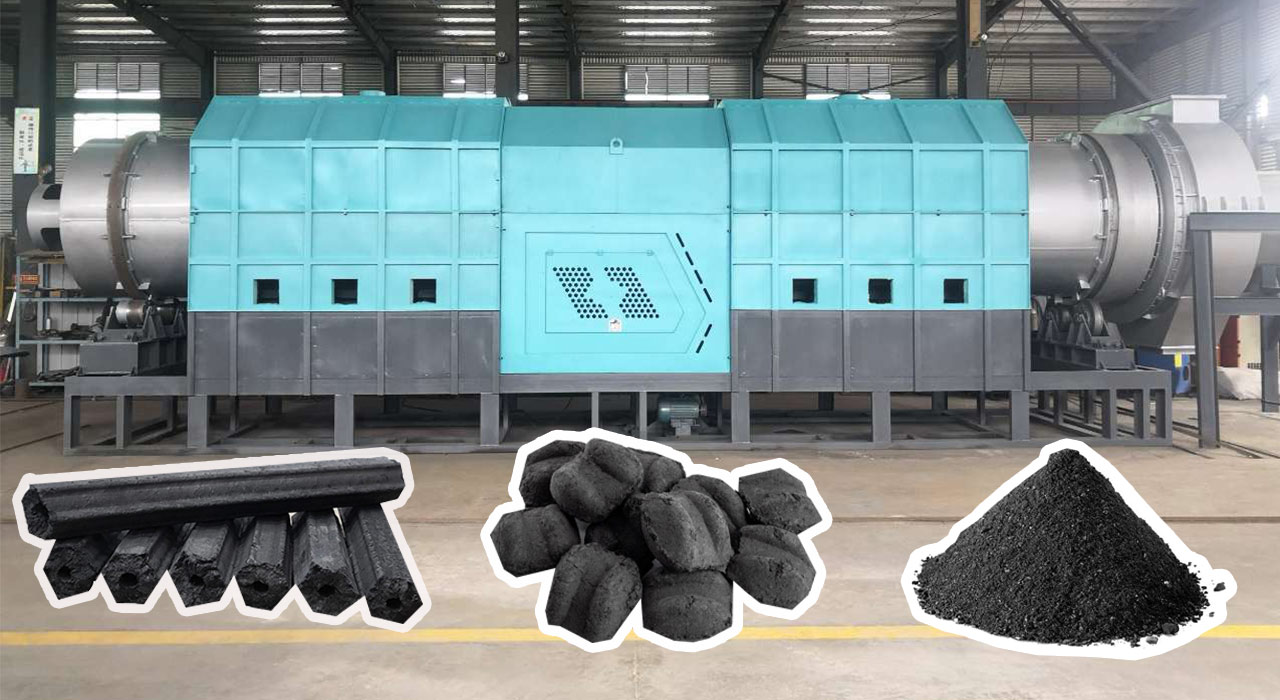Agricultural Residues as Feedstock
The agricultural sector generates vast quantities of biomass residues that are often discarded, burned, or left to decompose. Materials such as rice husks, coconut shells, palm shells, and crop stalks present a renewable and abundant resource for charcoal production. By directing these residues into pyrolysis systems, agricultural waste is transformed into high-value products, reducing disposal costs and mitigating open-field burning practices that contribute to air pollution. The growing adoption of a rice husk charcoal briquettes machine or a palm shell charcoal machine exemplifies how specific feedstocks can be processed into market-ready fuel alternatives.
Economic Viability and Cost Considerations
Integrating charcoal production with waste management offers both ecological and financial benefits. Farmers and entrepreneurs can offset waste disposal expenses while generating additional income through the sale of charcoal. Evaluating the charcoal making machine price is crucial, as capital investment varies depending on processing capacity, automation level, and emission control features. For small-scale operators, a modestly priced unit can quickly recover costs due to the steady demand for fuel in domestic and commercial sectors. Large-scale facilities benefit from economies of scale, particularly when linked to consistent biomass sources such as coconut plantations or rice mills.

Technology Adaptability and Feedstock Versatility
Modern pyrolysis systems are engineered for feedstock flexibility, allowing the same machine to process multiple biomass residues with minimal adjustments. A coconut charcoal making machine, for instance, can operate efficiently with palm shells or other lignocellulosic materials, ensuring steady production even when one type of residue is in short supply. This adaptability strengthens the integration between agricultural cycles and charcoal output, creating a year-round utilization model that minimizes idle capacity and maximizes revenue streams.

Environmental and Resource Efficiency
Transforming agricultural residues into charcoal significantly reduces the volume of waste entering landfills or contributing to environmental degradation. The pyrolysis process also generates byproducts such as syngas, which can be harnessed for heat recovery, further lowering reliance on fossil fuels. When converted into briquettes through a rice husk charcoal briquettes machine, the resulting product burns cleaner than traditional firewood, producing less smoke and fewer harmful particulates. This sustainable cycle not only improves air quality but also enhances energy access in rural communities.
Market Expansion and Value-Added Products
The demand for renewable fuel sources continues to expand, opening new opportunities for agricultural waste-to-charcoal enterprises. Briquettes, activated carbon, and industrial-grade charcoal each serve distinct market segments, from household cooking to water purification and metallurgy. A palm shell charcoal machine enables operators to tap into export markets where uniform, high-density charcoal is in demand. Similarly, briquettes from rice husks provide affordable energy for local households while reducing dependence on forest-derived fuel. Value-added diversification strengthens revenue stability and positions charcoal producers as key players in the circular economy.
Conclusion
The integration of charcoal production with agricultural waste management represents a convergence of economic opportunity and environmental responsibility. By utilizing technologies such as a rice husk charcoal briquettes machine, a palm shell charcoal machine, or a coconut charcoal making machine, agricultural residues are transformed into reliable energy sources. Combined with careful consideration of charcoal making machine price, this approach enables efficient waste valorization, reduced ecological burden, and sustainable profit generation across farming communities and industrial markets alike.